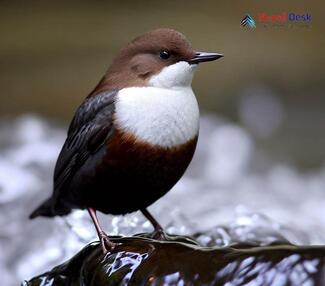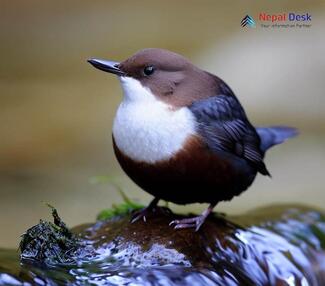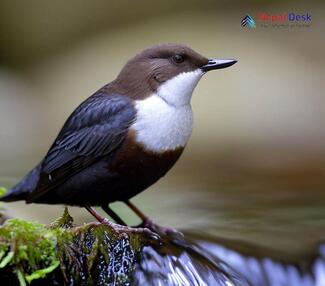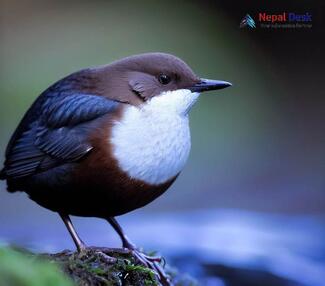Bird enthusiasts and nature lovers are equally captivated by the remarkable features of the White-throated Dipper (Cinclus cinclus). This exceptional bird is the sole aquatic songbird in Europe and Asia, enthralling observers with its distinct appearance and fascinating conduct. In this article, we will investigate the various aspects of the White-throated Dipper's life – from taxonomy and appearance to living conditions, diet, mating rituals, nesting patterns, and their presence in Nepal.
The Classification and Appearance of the Dipper
White-throated Dippers fall under the Cinclidae family of the Passeriformes order. These sturdy birds range from small to medium-sized, reaching 14-18 cm in length and weighing between 40-90 grams. A striking white throat patch sets them apart from their mostly dark brown plumage. Their compact tails, stout bodies, and strong legs make them well-suited for their distinctive watery homes.
Natural Settings and Food Choices
These dippers are typically found in unpolluted, fast-flowing freshwater ecosystems like rivers and streams across Europe and Asia. They favor regions with a blend of foraging pools and submerged rocks or other elements for resting. They mainly feed on aquatic insects such as caddisfly larvae (Trichoptera) but also consume crustaceans and small fish when available.
Courtship Rituals and Nest Building
The breeding season generally begins around March or April for White-throated Dippers, depending on their geographic location. Their unique courtship includes swift wing movements combined with bouncing body gestures and melodious singing. Once a partnership is formed, both birds collaborate to construct a dome-shaped nest using mosses, leaves, and grasses found in nature. Nests are strategically located near or above water to protect them from predators and provide easy access to food resources. The females lay 4-5 eggs on average, handling the sole task of incubation for about 15-17 days, while the males actively defend the territory and supply food.
Observing Dippers in Nepal
With over 800 bird species, Nepal is a hub for avian biodiversity. The White-throated Dipper is no exception and can be spotted in the country's mid-hill region rivers and streams. Prime spots for observing this one-of-a-kind bird include Langtang National Park, Sagarmatha National Park, and various sites within the Annapurna Conservation Area.
In summary, White-throated Dippers are incredible birds that showcase nature's beauty and resilience as they adapt to their watery environment. Understanding their classification, physical traits, favored habitats, diet, breeding behavior, nesting practices, and occurrence in Nepal instills a profound appreciation and reverence for these sophisticated aquatic songbirds.




